Physical Address
304 North Cardinal St.
Dorchester Center, MA 02124
Physical Address
304 North Cardinal St.
Dorchester Center, MA 02124

From venomous snakes to escaped big cats, these shocking British creatures could turn your peaceful countryside walk into a nightmare.
You’d never guess that the peaceful British countryside harbors creatures that could send you to the hospital. While the UK isn’t home to lions or deadly cobras, it does house several species that demand your respect and caution. From Britain’s only venomous snake to exotic big cats in private collections, these dangerous animals might be closer than you think. Let’s explore the nine species you should keep an eye out for during your next outdoor adventure.
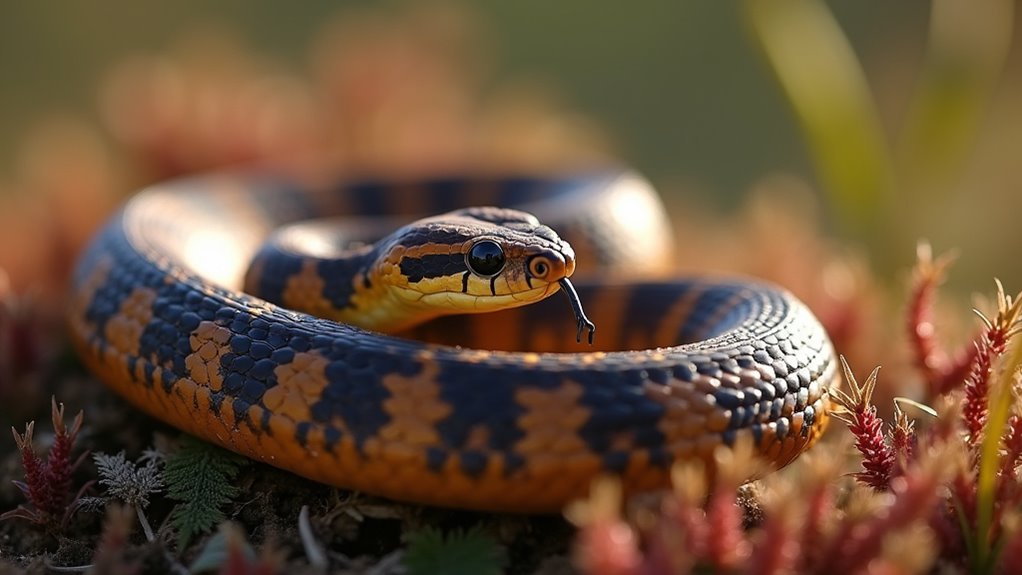
The common adder holds a unique distinction as Britain’s only native venomous snake. You’ll spot these reptiles in heathlands, woodlands, and moorland edges, often basking on sun-warmed paths or rocks.
Males display grey coloring with black zigzags, while females show brown or reddish hues with darker patterns. These fascinating creatures can reach lengths of up to 60 centimeters as adults.
While venomous, adders aren’t as dangerous as you might think. Their bites, though painful, rarely prove fatal – there hasn’t been a death since 1975.
If you’re bitten, you’ll likely experience swelling, nausea, and dizziness. The best prevention is staying alert on trails and watching where you step, especially between March and October when they’re most active.
While adders may be Britain’s only venomous snake, spiders represent a different kind of concern for UK residents. The false widow spider, first spotted in the UK around 1870, has gained a notorious reputation that far exceeds its actual threat level.
You’ll find these spiders in urban areas, particularly on buildings, fences, and among ivy. Their leg span covers a fifty pence piece. Though they’re venomous, their bites are rare and typically cause only mild symptoms like localized pain and swelling.
There’s never been a UK fatality from their bites, while bee and wasp stings cause about 12 deaths annually.
Originally from Madeira and the Canary Islands, they’re now spreading northward across Britain due to milder winters.
Despite media sensationalism, they’re actually beneficial predators that help control pest populations in urban environments.
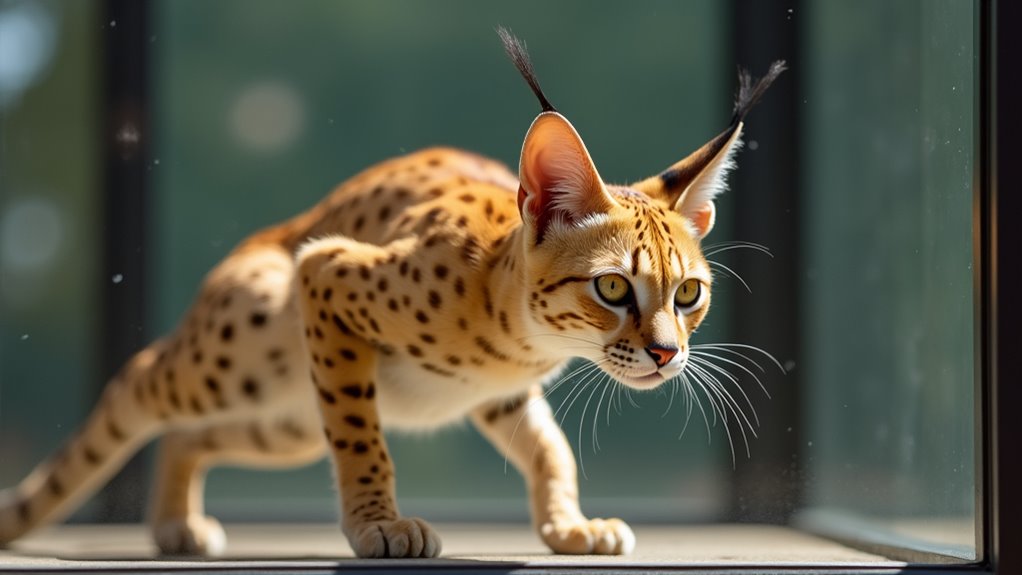
Private ownership of exotic cats in the UK requires strict oversight through the Dangerous Wild Animals (DWA) license system. Currently, there are 53 servals and 43 hybrid wildcats in private homes across the country, with servals being one of the most popular exotic cat species.
You’ll need to obtain a DWA license if you’re considering owning a serval or lynx, but be aware that these permits are notoriously difficult to secure. The criteria focus heavily on your ability to provide proper care for these African natives. The outdated legislation from 1976 Dangerous Animals Act needs urgent reform to address modern exotic pet ownership challenges.
While social media has fueled interest in exotic cats, there’s mounting concern over their welfare in domestic settings. Many surrendered cats struggle to find suitable new homes, and conservation experts worry about the trade’s impact on wild populations.
As licensed venomous snake ownership continues to rise in the UK, private collectors now maintain approximately 400 specimens – far surpassing the number kept in zoos.
You’ll find 43 licenses issued under the Dangerous Wild Animals Act, covering 508 venomous snakes across the country.
While private collections grow, you’ll notice a concerning trend in zoos. They’ve seen a 73% drop in venomous snake holdings over the past 20 years, with species diversity falling from 20 to just 10 genera.
UK zoos have lost nearly three-quarters of their venomous snake collections since 2003, with species diversity cut in half.
This shift creates challenges for conservation efforts, though non-venomous snake populations in zoos have increased by 40%.
If you’re considering keeping venomous snakes, you’ll need specialized knowledge and proper licensing.
Local authorities handle permits, but enforcement and monitoring standards vary greatly by region. The welfare standards for these dangerous animals remain broad and lack species-specific requirements.
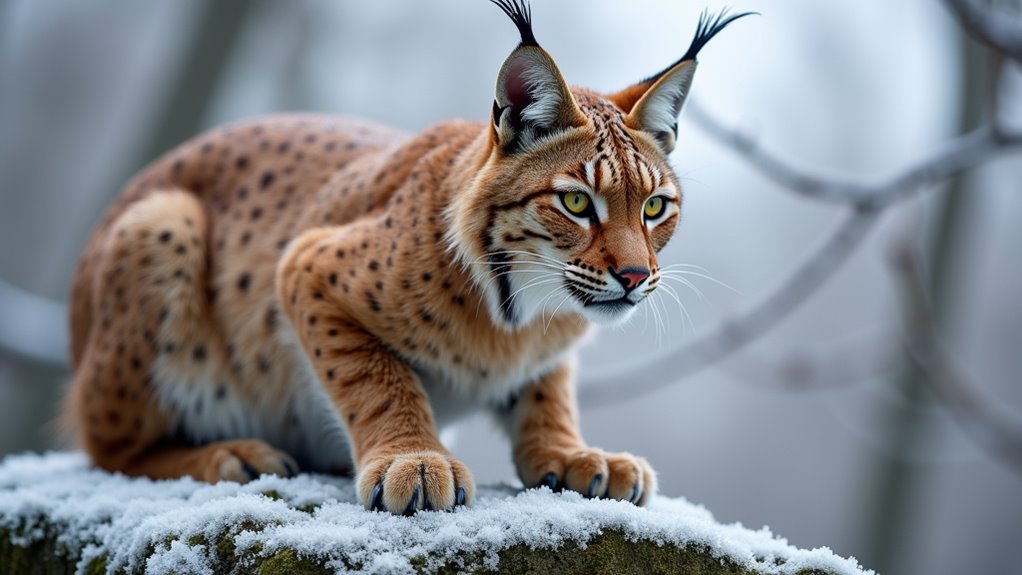
Beyond venomous snakes, the UK’s Dangerous Wild Animals Act 1976 (DWAA) covers a wide range of wild mammals that pose significant risks to public safety.
You’ll find big cats like lions, tigers, and leopards at the top of the regulated list, alongside dangerous primates including gibbons and certain lemur species.
Large marsupials aren’t exempt either – Tasmanian devils, grey and red kangaroos, and wallaroos all require special licenses.
Bears of all types, from polar to grizzly, are strictly regulated, as are wolves and other wild canids.
If you’re thinking of keeping any of these animals, you’ll need to obtain a license from your local authority, who’ll inspect your facilities regularly. Zoos and circuses are specifically exempt from these licensing requirements.
While many people associate venomous creatures with exotic locations, the UK has its own toxic mammal – the water shrew (Neomys fodiens).
You’ll find these small but remarkable creatures near rivers and wetlands across mainland Britain, where they hunt using their venomous saliva to paralyze prey.
Don’t worry too much if you encounter one – their bite can’t fully penetrate human skin, though it might cause a painful rash.
You can identify water shrews by their distinctive black fur on top and greyish-white underneath. They’re tiny, measuring just 67-96mm in length and weighing 12-18 grams.
These highly skilled hunters dive underwater to catch freshwater shrimps and larvae, demonstrating their impressive semi-aquatic abilities.
While they’re classified as “Least Concern,” you should know these unique mammals face threats from water pollution and habitat loss, which affect their food sources and survival.
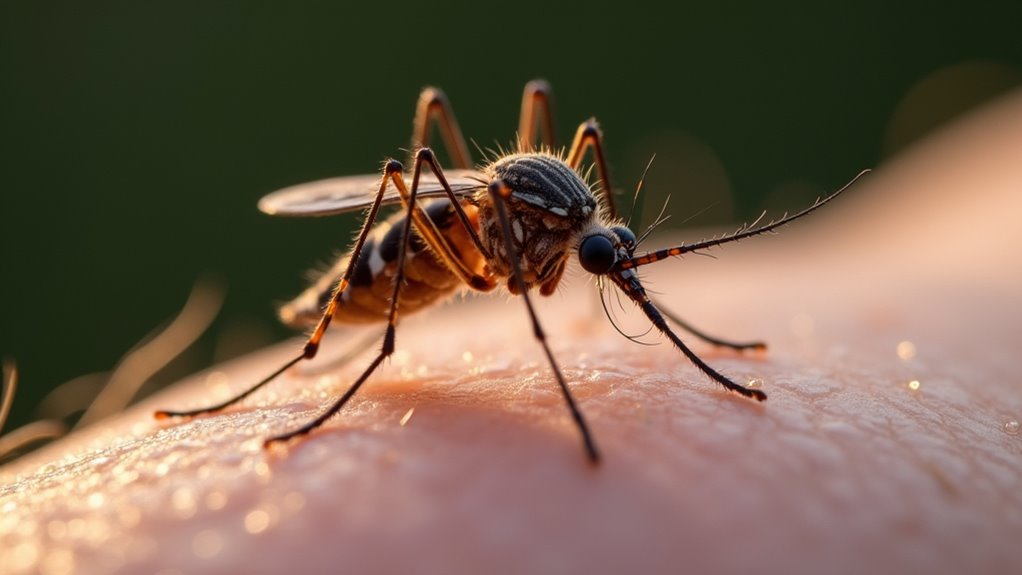
Although most people don’t consider mosquitoes a major threat in the UK, these insects deserve our attention with 36 different species calling Britain home.
In Scotland alone, records dating from 1886 to 1993 documented 18 different species.
You’ll find them most commonly in southern England, where warmer temperatures create ideal breeding conditions.
The Culex pipiens mosquito poses the greatest concern, as it can potentially transmit diseases like West Nile Virus and Usutu.
While these diseases aren’t currently common in the UK, climate change could increase their prevalence. You should be particularly vigilant if you’re in the southeast, where mosquito populations are denser.
The UK Health Security Agency actively monitors these insects through nationwide surveys, tracking their distribution and seasonal patterns.
If you spot mosquitoes, you can help by reporting sightings to contribute to this important surveillance effort.
Since the UK strictly regulates exotic animal ownership, you’ll find most crocodilians housed in specialized facilities like Crocodiles of the World, which maintains Britain’s largest collection with 19 different species.
These facilities must meet rigorous safety standards, including specialized enclosures and multiple security barriers to protect both staff and visitors.
You should know that keeping crocodilians isn’t just about display – these collections serve vital conservation roles for endangered species. Crocodiles of the World has achieved remarkable success with their endangered breeding programs, particularly being the first UK facility to breed Critically Endangered Siamese crocodiles.
Staff members must obtain dangerous animal handling certifications and follow strict protocols for emergencies and disease control.
While the commercial trade of crocodilian skins remains significant globally, with 1.3 million skins traded at its peak in 2002, UK private collections focus primarily on education and species preservation rather than commercial purposes.
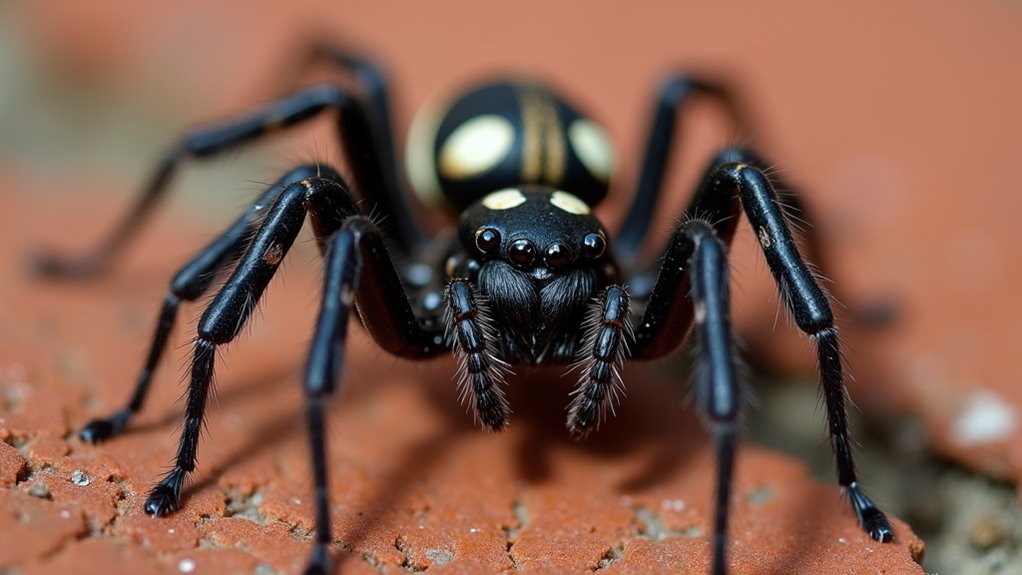
The UK has three main categories of venomous spiders and scorpions you’ll encounter: native species with mild venom, introduced species like false widows, and exotic species kept in captivity.
While native spiders like the walnut orb-weaver and European garden spider can bite, their venom isn’t dangerous to humans. The Tube Web Spider often makes its home in external walls and wooden surfaces. You might experience minor symptoms like burning pain or swelling, similar to a wasp sting.
The false widow spider, though not native, has become common but rarely bites.
The most potent venomous creatures are found in controlled environments like zoos and private collections. These include various exotic scorpion species that require special permits and handling protocols.
Don’t worry – you won’t randomly encounter these specimens, as they’re strictly regulated under the Animal Welfare Act.
While you might think the UK’s a relatively safe place when it comes to dangerous animals, you’ll find over 3,000 licensed dangerous species kept in private collections across the country. That’s in addition to native species like the Common Adder, which bites around 100 people annually. Stay informed, keep your distance when encountering wild animals, and remember that most UK wildlife will avoid human contact if possible.